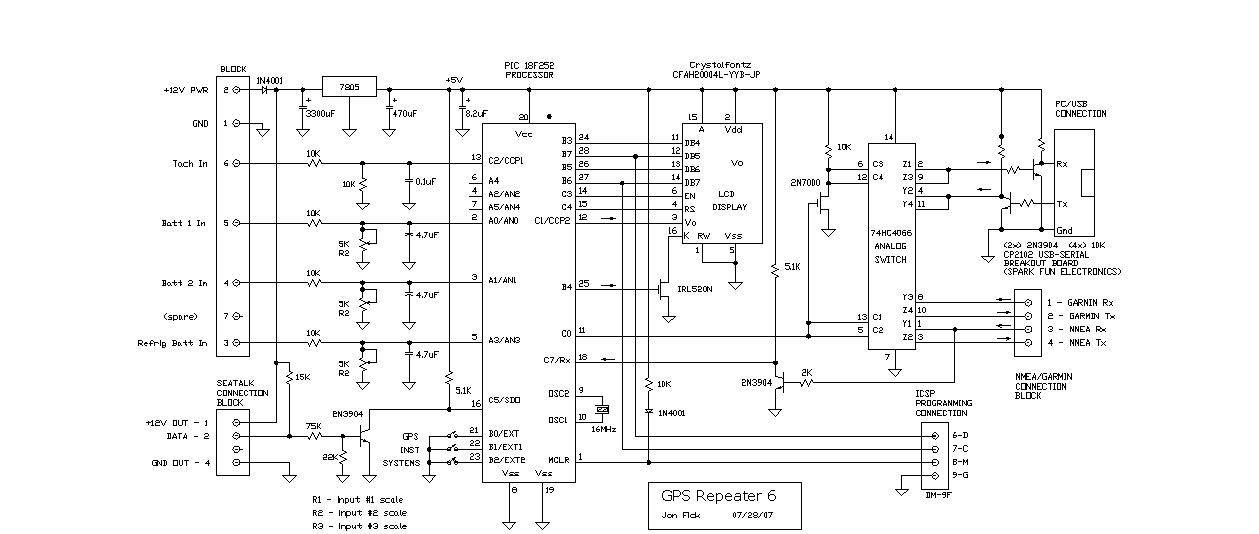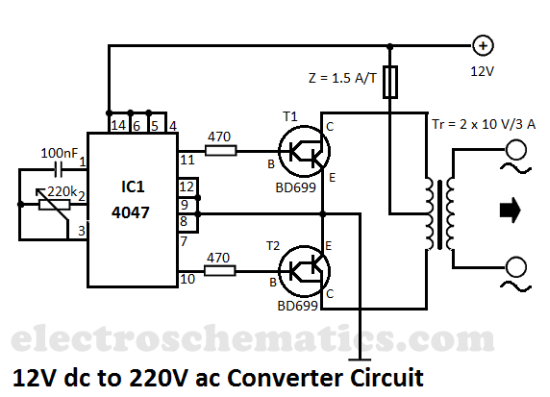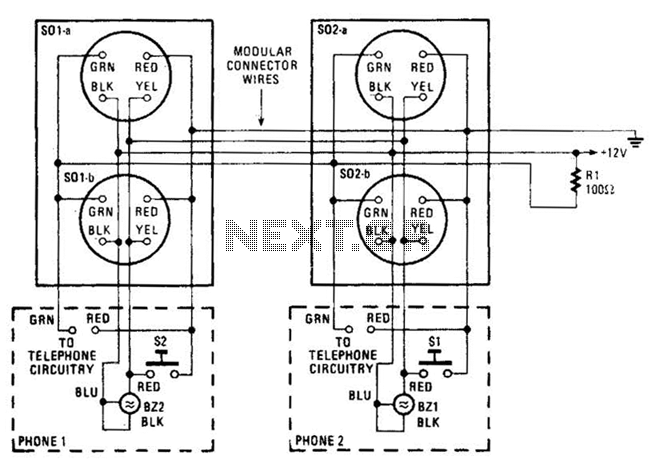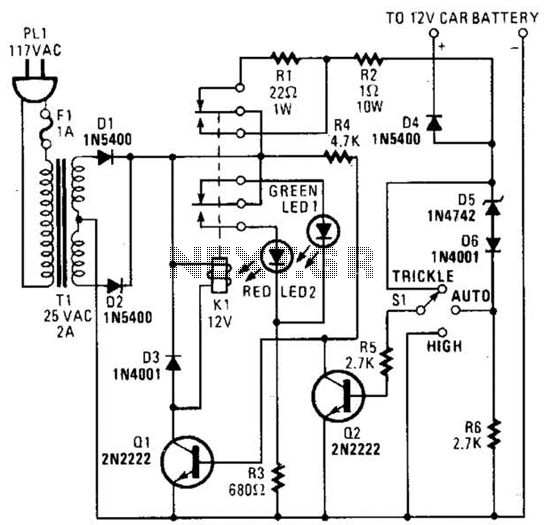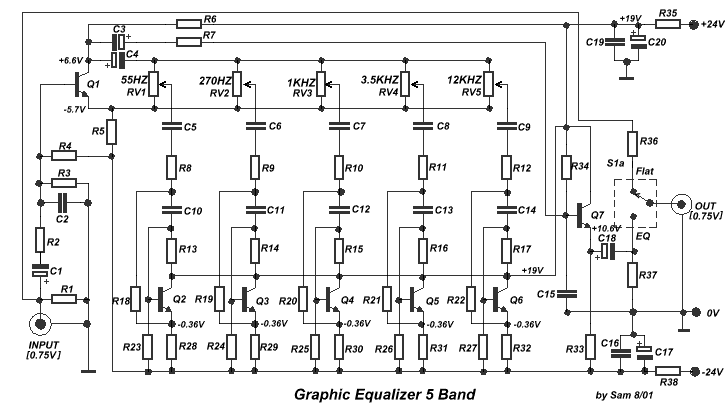
Voltage Doubler Supply Circuit
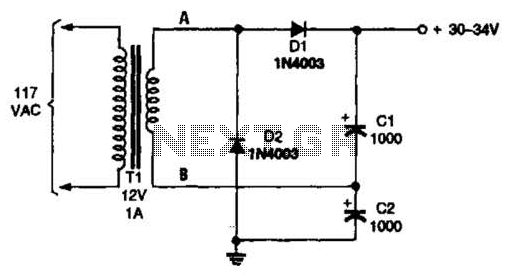
The voltage doubler consists of two diodes (D1 and D2) and two capacitors (C1 and C2), which are supplied by a 12-V, 1-A step-down transformer (T1).
The voltage doubler circuit is designed to convert a lower input voltage into a higher output voltage using a combination of diodes and capacitors. In this circuit, the step-down transformer (T1) provides an input voltage of 12 volts at a current rating of 1 ampere.
The operation of the voltage doubler can be understood in two phases. During the first half of the AC cycle, the transformer outputs a positive voltage, which forward-biases diode D1. This allows current to flow through D1 and charge capacitor C1 to the peak voltage of the transformer output, effectively storing energy. At the same time, diode D2 is reverse-biased and does not conduct.
In the second half of the AC cycle, the transformer output becomes negative. This reverse-biases diode D1, preventing any discharge from capacitor C1. However, diode D2 becomes forward-biased, allowing capacitor C2 to charge to a voltage that is the sum of the transformer output voltage and the voltage across capacitor C1. As a result, capacitor C2 stores a voltage that is approximately double the peak voltage of the transformer output.
The output voltage can be taken across capacitor C2, which will be approximately 24 volts (assuming ideal components and no losses), effectively doubling the input voltage. The capacitors also play a crucial role in smoothing the output voltage, providing a more stable DC voltage for downstream applications. Proper selection of the diodes and capacitors is essential to ensure efficient performance and reliability of the voltage doubler circuit. The voltage doubler is built around a pair of diodes (Dl and D2) and a pair of capacitors (CI and C2) that are fed from, in this ease, a 12-V, 1-A step-down transformer (Tl).
The voltage doubler circuit is designed to convert a lower input voltage into a higher output voltage using a combination of diodes and capacitors. In this circuit, the step-down transformer (T1) provides an input voltage of 12 volts at a current rating of 1 ampere.
The operation of the voltage doubler can be understood in two phases. During the first half of the AC cycle, the transformer outputs a positive voltage, which forward-biases diode D1. This allows current to flow through D1 and charge capacitor C1 to the peak voltage of the transformer output, effectively storing energy. At the same time, diode D2 is reverse-biased and does not conduct.
In the second half of the AC cycle, the transformer output becomes negative. This reverse-biases diode D1, preventing any discharge from capacitor C1. However, diode D2 becomes forward-biased, allowing capacitor C2 to charge to a voltage that is the sum of the transformer output voltage and the voltage across capacitor C1. As a result, capacitor C2 stores a voltage that is approximately double the peak voltage of the transformer output.
The output voltage can be taken across capacitor C2, which will be approximately 24 volts (assuming ideal components and no losses), effectively doubling the input voltage. The capacitors also play a crucial role in smoothing the output voltage, providing a more stable DC voltage for downstream applications. Proper selection of the diodes and capacitors is essential to ensure efficient performance and reliability of the voltage doubler circuit. The voltage doubler is built around a pair of diodes (Dl and D2) and a pair of capacitors (CI and C2) that are fed from, in this ease, a 12-V, 1-A step-down transformer (Tl).
